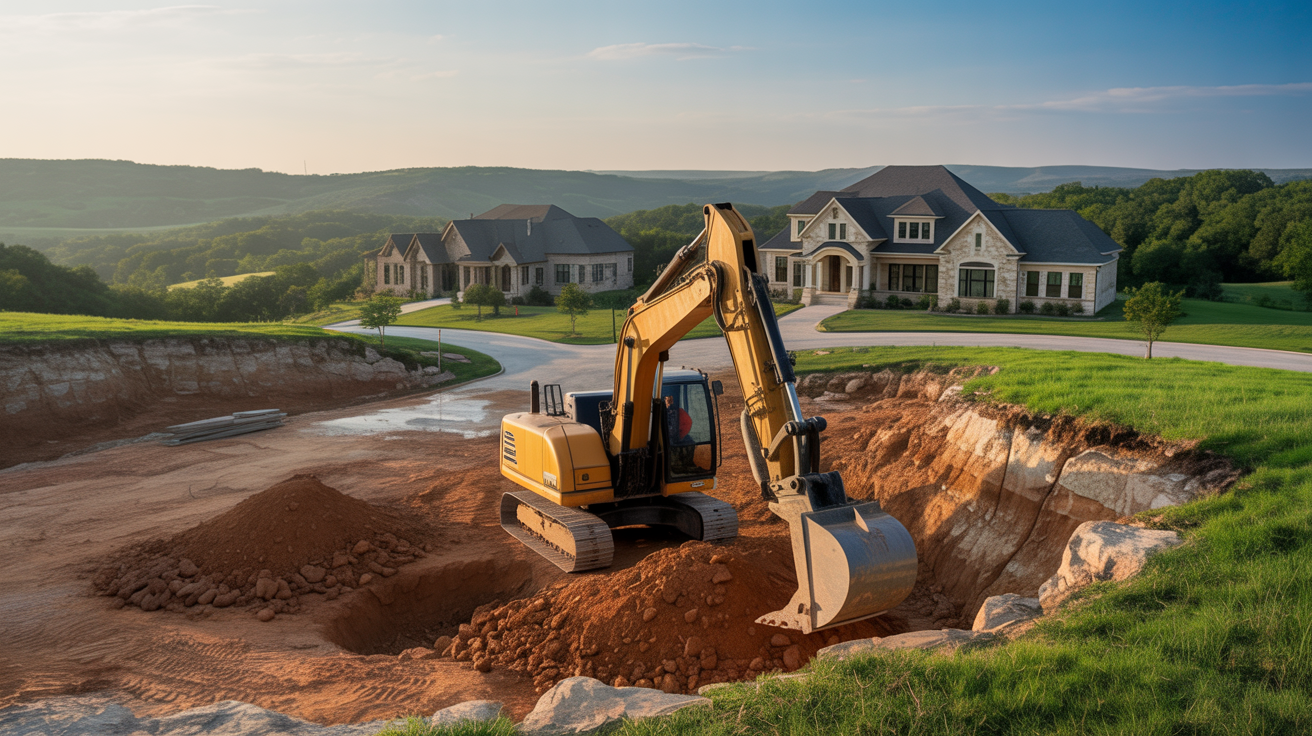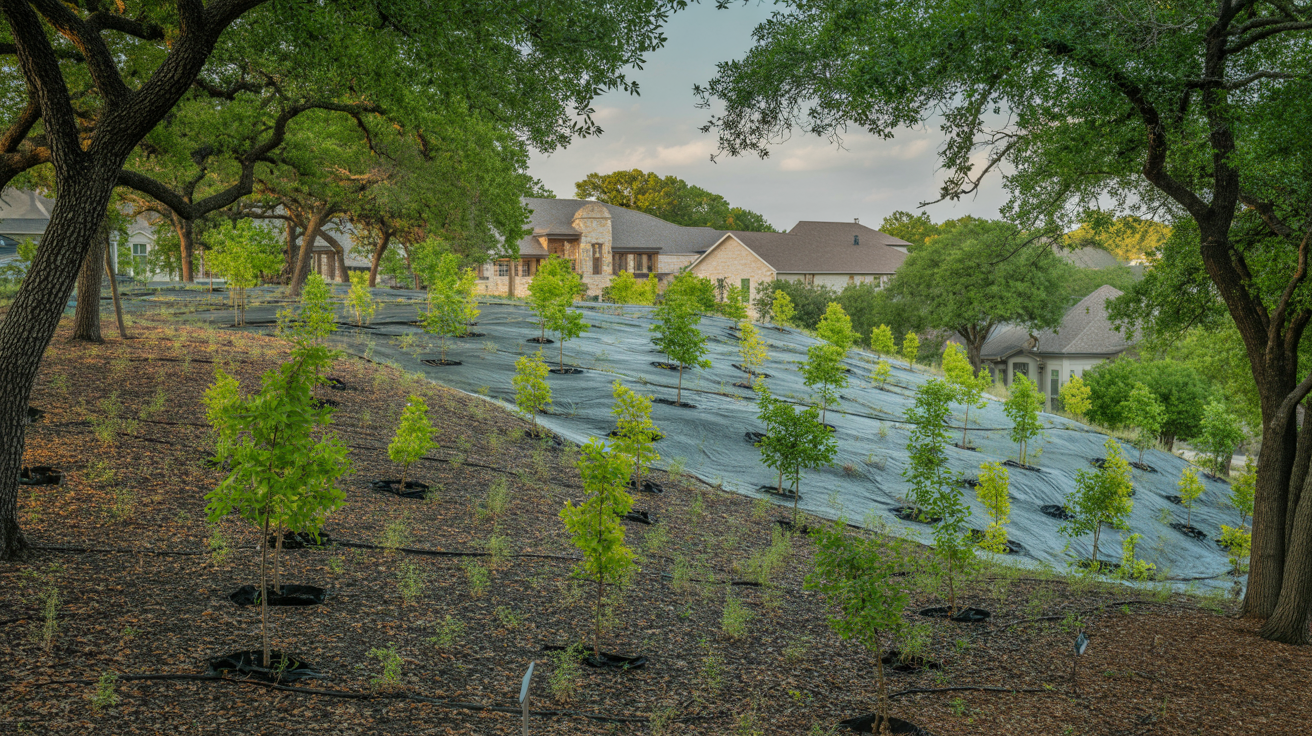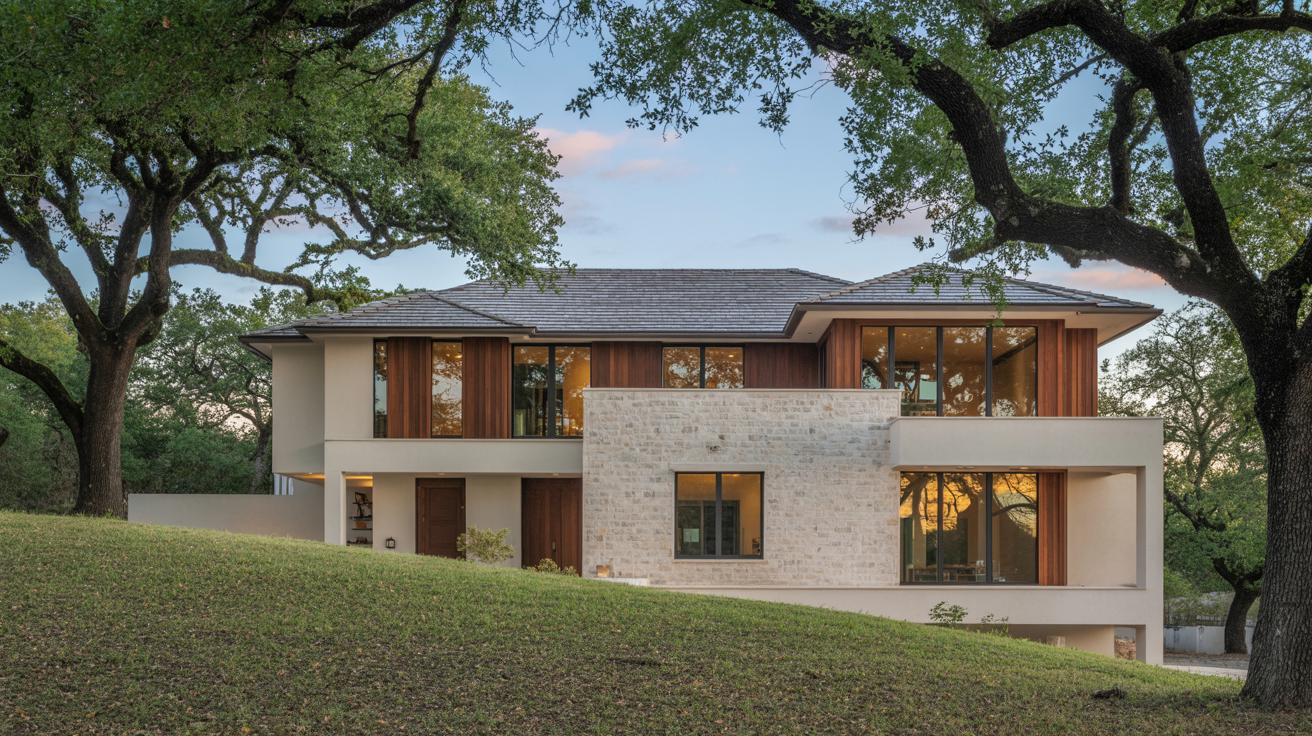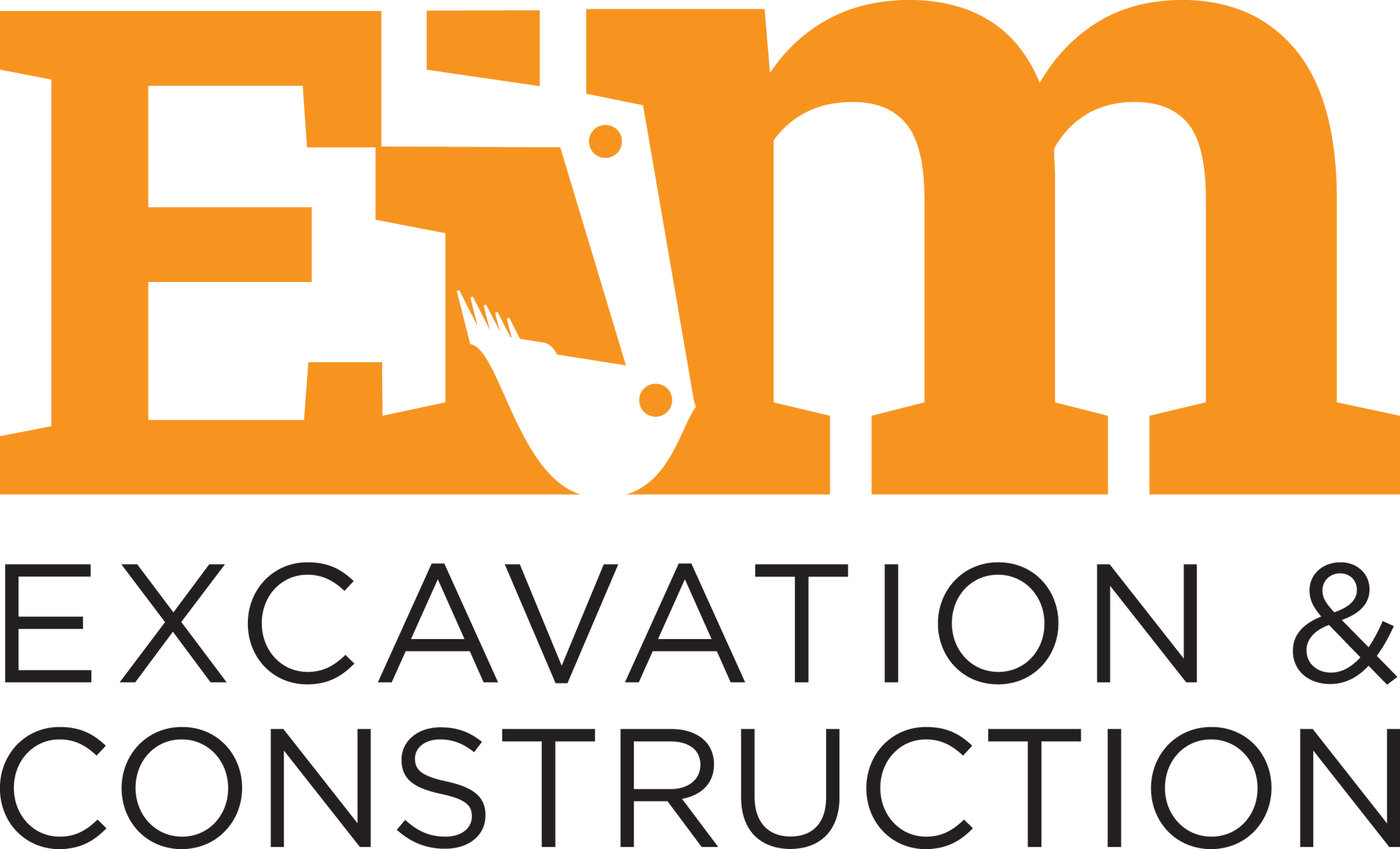Foundation Contractor in Dripping Springs
Foundation Contractor in Dripping Springs

Looking for a foundation contractor in Dripping Springs who truly understands what it means to build in the Texas Hill Country? You've found yourself in one of the most beautiful and challenging places to build in all of Texas. Dripping Springs isn't called the "Gateway to the Hill Country" for nothing – this area where the Edwards Plateau meets rolling hills creates a landscape that's absolutely stunning but presents unique foundation challenges that require specialized expertise.
If you've spent any time in Dripping Springs, you know this community is experiencing incredible growth. What was once a quiet rural area known for its scenic beauty and small-town charm has become one of the most desirable places to live in the Austin metro area. New luxury developments like Wildridge and Headwaters are bringing hundreds of new homes to the area, while existing neighborhoods are seeing significant custom home construction.
But here's what many people don't realize until they start building: Dripping Springs' beautiful Hill Country setting comes with foundation challenges that can make or break your construction project. The limestone bedrock that creates those gorgeous views can also create expensive surprises during foundation work. The expansive clay soils that support the area's lush vegetation can shift and move in ways that threaten foundation stability. And the rolling terrain that makes Dripping Springs so picturesque requires foundation solutions that work with the natural topography rather than against it.
In this guide, we'll explore everything you need to know about working with foundation contractors in Dripping Springs. We'll cover the unique challenges of building foundations in Hill Country terrain, the services you can expect from professional contractors, and how to choose a team that understands both the technical requirements and the community standards that make Dripping Springs special.
Understanding Dripping Springs Foundation Challenges
Dripping Springs sits at the intersection of several geological formations that create both opportunities and challenges for foundation work. Understanding these challenges is the first step in ensuring that your foundation project is successful and provides long-term stability for your investment.
Hill Country Soil Conditions
The soil conditions in Dripping Springs are as varied as the terrain itself. In some areas, you'll find shallow soils over limestone bedrock that provide excellent bearing capacity but can be difficult and expensive to excavate. In other areas, deeper clay soils provide easier excavation but come with their own set of challenges related to expansion and contraction.
The Edwards Plateau limestone that underlies much of Dripping Springs creates unique foundation opportunities and challenges. While limestone provides excellent bearing capacity for foundations, it can also create underground voids and caverns that affect foundation design. Foundation contractors in Dripping Springs need to understand how to identify and work with these geological features.
Clay soils in the area are particularly challenging because they're highly reactive to moisture changes. During wet periods, these soils can expand significantly, creating pressure against foundation walls and basement structures. During dry periods, the same soils can shrink and pull away from foundations, creating gaps that allow water infiltration and can lead to settlement problems.
The transition zones between different soil types can be particularly problematic for foundation work. A single building site might have limestone bedrock in one area and deep clay soils in another, requiring foundation designs that can accommodate these varying conditions.
Drainage and Water Management
Water management is critical for foundation success in Dripping Springs, where the rolling terrain creates complex drainage patterns and the limestone bedrock affects how water moves through the soil. Poor drainage design can lead to foundation problems that are expensive and difficult to correct.
The Hill Country's topography means that many building sites are on slopes that require careful attention to surface drainage. Water that isn't properly directed away from foundations can cause erosion, settlement, and moisture problems that affect foundation performance.
Groundwater conditions in Dripping Springs can be complex due to the limestone geology. Springs and seeps are common in the area, and foundation contractors need to understand how to identify and manage groundwater issues that could affect foundation stability.
The area's climate, with wet springs and dry summers, creates seasonal variations in soil moisture that affect foundation performance. Foundation designs need to account for these seasonal changes and include measures to minimize their impact on foundation stability.
Expansive Clay Issues
Expansive clay soils are one of the most significant foundation challenges in Dripping Springs. These soils can change volume dramatically with changes in moisture content, creating forces that can crack foundations, cause settlement, and lead to costly repairs.
The clay soils in Dripping Springs have high plasticity indices, meaning they expand and contract more than typical soils. This movement can be particularly problematic for slab-on-grade foundations, which are in direct contact with the soil and experience the full force of soil movement.
Seasonal moisture variations in the Hill Country exacerbate expansive clay problems. The wet spring months can cause significant soil expansion, while the hot, dry summers can cause dramatic shrinkage. Foundation contractors need to understand how to design foundations that can accommodate these seasonal movements without damage.
Tree roots can also affect expansive clay behavior around foundations. Large trees can remove significant amounts of moisture from clay soils, causing localized shrinkage that can affect foundation stability. Contractors need to understand how to work around existing trees and plan for their long-term effects on foundation performance.
Foundation Services in Dripping Springs
Professional foundation contractors in Dripping Springs offer a comprehensive range of services designed to address the unique challenges of building in Hill Country terrain.
New Construction Foundations
New construction foundation work in Dripping Springs requires careful planning and execution to ensure long-term performance in challenging soil conditions. This work begins with thorough site evaluation and soil testing to understand the specific conditions that will affect foundation design and construction.
Foundation contractors in Dripping Springs working on new construction need to understand how to design foundations that work with the natural terrain rather than against it. This often means using stepped foundations on sloped sites, incorporating retaining walls to manage grade changes, and designing drainage systems that work with natural water flow patterns.
The foundation design process for new construction typically involves close collaboration with structural engineers, architects, and geotechnical consultants. Contractors need to understand how to implement complex foundation designs while maintaining construction efficiency and cost control.
Quality control is particularly important for new construction foundations in Dripping Springs because the challenging soil conditions leave little room for error. Contractors need to have rigorous inspection and testing procedures to ensure that foundations meet all design specifications and building code requirements.
Foundation Repair and Leveling
Foundation repair work in Dripping Springs often involves addressing problems caused by expansive clay soils, poor drainage, or settlement issues. These repairs can range from simple crack sealing to major underpinning projects that require extensive excavation and structural work.
Slab leveling is a common repair need in Dripping Springs, where expansive clay soils can cause differential settlement that creates uneven floors and structural stress. Modern leveling techniques using polyurethane injection or concrete lifting can often restore level floors without the expense and disruption of complete foundation replacement.
Pier installation is another common repair technique used to address settlement problems in Dripping Springs. Steel or concrete piers are installed to bedrock or stable soil layers to provide permanent support for settling foundations. This work requires specialized equipment and expertise to ensure proper installation and long-term performance.
Drainage improvements are often a critical component of foundation repair work in Dripping Springs. Poor drainage is frequently the root cause of foundation problems, and effective repairs must address drainage issues to prevent future problems.
Pier and Beam Systems
Pier and beam foundations are particularly well-suited to Dripping Springs' challenging soil conditions because they minimize contact with expansive clay soils and can accommodate the area's sloped terrain more easily than slab foundations.
Modern pier and beam systems in Dripping Springs typically use concrete or steel piers that extend to bedrock or stable soil layers. This provides a stable foundation system that isn't affected by seasonal soil movements or expansive clay behavior.
The elevated design of pier and beam systems also provides better access for utilities and allows for natural ventilation that helps prevent moisture problems. This can be particularly beneficial in Dripping Springs' humid climate where moisture control is important for long-term building performance.
Pier and beam systems can also be more easily modified or repaired than slab foundations, which is important in an area where soil conditions can create ongoing foundation challenges. Contractors can access and adjust individual piers without affecting the entire foundation system.
For comprehensive foundation services that understand Dripping Springs' unique challenges, Austin area excavation and site preparation services can provide the specialized expertise needed for Hill Country foundation projects.
Choosing a Foundation Contractor in Dripping Springs
Selecting the right foundation contractor for your Dripping Springs project requires understanding what makes this area unique and finding contractors who have the experience and expertise to handle Hill Country challenges.
Local Experience and Knowledge
Experience working specifically in Dripping Springs and the surrounding Hill Country is invaluable when selecting a foundation contractor. The geological conditions, soil characteristics, and climate factors in Dripping Springs are different from other parts of the Austin metro area, and contractors who understand these differences can save you time, money, and future problems.
Look for contractors who can provide references from other Dripping Springs projects and who demonstrate understanding of local conditions during initial consultations. They should be able to discuss the specific challenges of working with limestone bedrock and expansive clay soils, and they should understand the importance of proper drainage design in Hill Country terrain.
Local knowledge also includes understanding the permitting process in Dripping Springs and Hays County. Experienced contractors know which projects require special permits, how long the approval process typically takes, and how to avoid common pitfalls that can delay projects.
The best foundation contractors in Dripping Springs also understand the community's character and expectations. This is an area where property values are high and residents expect quality work that enhances rather than detracts from the natural beauty of the Hill Country setting.
Specialized Equipment and Techniques
Working in Dripping Springs' challenging terrain requires specialized equipment and techniques that not all foundation contractors possess. Look for contractors who have rock drilling equipment for working with limestone bedrock, specialized compaction equipment for working with clay soils, and dewatering equipment for managing groundwater issues.
The equipment should be appropriate for the scale and type of work involved in your project. Custom home foundations may require smaller, more precise equipment that can work in tight spaces and preserve existing landscaping, while larger developments may need heavy-duty equipment capable of handling extensive excavation and grading work.
Modern foundation work in Dripping Springs often benefits from advanced techniques like helical piers, push piers, and polyurethane injection systems. Contractors should be familiar with these techniques and understand when each is most appropriate for specific soil conditions and foundation problems.
Quality control equipment is also important for foundation work in challenging soil conditions. Contractors should have soil testing equipment, concrete testing tools, and surveying instruments to ensure that foundation work meets all specifications and performance requirements.
Warranty and Long-term Support
Foundation work in Dripping Springs' challenging soil conditions requires contractors who stand behind their work with comprehensive warranties and ongoing support. Look for contractors who offer substantial warranties on their work and who have a track record of honoring warranty commitments.
The best contractors understand that foundation work is a long-term investment and that ongoing support may be needed as buildings settle and soil conditions change over time. They should be available for periodic inspections and minor adjustments that may be needed to maintain foundation performance.
Warranty terms should be clearly defined and should cover both materials and workmanship. Be wary of contractors who offer limited warranties or who seem reluctant to discuss warranty terms in detail.
Consider also the contractor's financial stability and longevity in the business. Foundation warranties are only valuable if the contractor is still in business and financially able to honor them when problems arise.
Foundation Types Best Suited for Dripping Springs
The unique soil and geological conditions in Dripping Springs make some foundation types more suitable than others. Understanding these options can help you make informed decisions about your foundation project.
Slab-on-Grade Foundations
Slab-on-grade foundations can work well in Dripping Springs when properly designed and constructed, but they require special attention to soil preparation and drainage to prevent problems with expansive clay soils.
Post-tension slab systems are often used in Dripping Springs because they can better accommodate soil movement than conventional reinforced concrete slabs. The post-tensioning cables help hold the slab together and minimize cracking when soil movement occurs.
Proper soil preparation is critical for slab foundations in Dripping Springs. This typically includes removing or stabilizing expansive clay soils, installing proper drainage systems, and using engineered fill materials that provide stable support for the slab.
Moisture control is particularly important for slab foundations in areas with expansive clay soils. This includes installing vapor barriers, perimeter drainage systems, and maintaining consistent moisture levels around the foundation perimeter.
Pier and Beam Systems
Pier and beam foundations are often the preferred choice for challenging sites in Dripping Springs because they minimize contact with problematic soils and can accommodate sloped terrain more easily than slab foundations.
Modern pier and beam systems typically use drilled concrete piers that extend to bedrock or stable soil layers. This provides a foundation system that isn't affected by seasonal soil movements or expansive clay behavior.
The elevated design of pier and beam systems provides several advantages in Dripping Springs' climate and soil conditions. The crawl space allows for natural ventilation that helps prevent moisture problems, provides easy access for utilities and future modifications, and allows for inspection and maintenance of the foundation system.
Pier and beam systems can also be more easily adapted to sloped sites and irregular terrain, which is common in Dripping Springs. Individual piers can be adjusted to accommodate grade changes without requiring extensive grading or retaining wall construction.
Basement and Crawl Space Options
Full basements are less common in Dripping Springs due to the limestone bedrock and expansive clay soils, but they can be constructed successfully with proper design and construction techniques.
Basement construction in Dripping Springs typically requires extensive waterproofing and drainage systems to manage groundwater and prevent moisture problems. The limestone geology can create complex groundwater conditions that require specialized design approaches.
Crawl spaces are often a good compromise between slab and basement construction in Dripping Springs. They provide many of the benefits of pier and beam systems while requiring less excavation than full basements.
Proper ventilation and moisture control are critical for basement and crawl space construction in Dripping Springs' humid climate. This includes installing proper drainage systems, vapor barriers, and ventilation systems that prevent moisture accumulation and related problems.
Preventing Foundation Problems in Dripping Springs
Prevention is always better than repair when it comes to foundation problems in Dripping Springs. Understanding how to prevent common foundation issues can save you significant money and frustration over the life of your building.
Proper Drainage Design
Drainage design is perhaps the most critical factor in preventing foundation problems in Dripping Springs. The area's rolling terrain and clay soils require careful attention to both surface and subsurface drainage to prevent water-related foundation problems.
Surface drainage systems should direct water away from foundations and prevent ponding around building perimeters. This typically includes proper grading, gutters and downspouts, and sometimes French drains or other subsurface drainage systems.
Subsurface drainage is particularly important in areas with expansive clay soils because it helps maintain consistent moisture levels around foundations. This can include perimeter drains, under-slab drainage systems, and moisture barriers that prevent water infiltration.
The design of drainage systems in Dripping Springs must also consider the area's limestone geology and the potential for underground water movement. Springs and seeps are common in the area and must be properly managed to prevent foundation problems.
Soil Preparation Techniques
Proper soil preparation is essential for foundation success in Dripping Springs' challenging soil conditions. This work begins with thorough soil testing to understand the specific characteristics of soils on your building site.
Expansive clay soils often require special treatment before foundation construction. This can include soil removal and replacement, chemical stabilization, or moisture conditioning to reduce the potential for future soil movement.
Compaction requirements for foundation soils in Dripping Springs are typically more stringent than in areas with more stable soils. Proper compaction helps ensure that foundations have stable support and reduces the potential for settlement problems.
Soil preparation work should also include installation of proper drainage systems and moisture barriers to prevent future soil movement and foundation problems.
Ongoing Maintenance Tips
Regular maintenance is important for preventing foundation problems in Dripping Springs' challenging environment. This includes monitoring for signs of foundation movement, maintaining proper drainage, and addressing minor problems before they become major issues.
Seasonal maintenance is particularly important in Dripping Springs because of the area's climate variations. This includes checking drainage systems before rainy seasons, monitoring soil moisture levels during dry periods, and watching for signs of foundation movement during periods of extreme weather.
Tree and landscaping maintenance can also affect foundation performance in Dripping Springs. Large trees can remove significant amounts of moisture from clay soils, causing localized soil movement that affects foundations. Proper tree care and strategic landscaping can help maintain consistent soil moisture levels around foundations.
Regular professional inspections can help identify potential foundation problems before they become serious. Foundation contractors in Dripping Springs who are familiar with local conditions can often spot early warning signs that property owners might miss.
What foundation type works best in Dripping Springs?
The best foundation type for Dripping Springs depends on specific site conditions, but pier and beam systems often work well because they minimize contact with expansive clay soils and can accommodate the area's sloped terrain. Post-tension slab systems can also be effective when properly designed with adequate drainage and soil preparation. The key is working with experienced contractors who understand local soil conditions and can recommend the most appropriate foundation type for your specific site and building requirements.
How do I know if my Dripping Springs home needs foundation repair?
Common signs of foundation problems in Dripping Springs include cracks in walls or ceilings, doors and windows that stick or don't close properly, uneven floors, and gaps around exterior doors and windows. You might also notice cracks in exterior brick or stucco, or separation between different building materials. Because Dripping Springs' expansive clay soils can cause seasonal foundation movement, it's important to monitor these signs over time and consult with a professional if you notice progressive changes or new problems developing.



